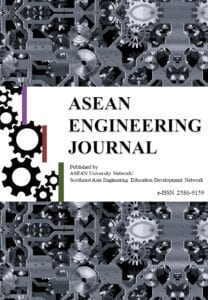THE INFLUENCE OF MINERALOGICAL COMPOSITION ON THE ADSORPTION CAPACITY OF HEAVY METALS SOLUTION BY JAVA NATURAL CLAY, INDONESIA
DOI:
https://doi.org/10.11113/aej.v11.16679Keywords:
Adsorption, Batch test, Clay, Heavy metals, JavaAbstract
The adsorption capacity of four clay samples (Boyolali-BYL, Sleman-SLM, Gunungkidul-GK, and Pacitan-PCT) from Java, Indonesia, for copper (Cu) lead (Pb), zinc (Zn) and cadmium (Cd) solution was investigated by using batch equilibrium test. The adsorption data were presented using an isotherm curve, and adjusted to the Langmuir equation model, which produced the maximum adsorption capacity of the clay samples. The physical, chemical, and mineralogical analysis showed that the BYL and PCT samples have higher montmorillonite content, cation exchange capacity (CEC), and specific surface area (SSA) compared to SLM and GK clay samples. The batch equilibrium test revealed that the clay samples with higher montmorillonite content produced higher heavy metal adsorption capacity due to the higher cation exchange capacity (CEC), and specific surface area (SSA). The batch equilibrium test also show that the adsorption order for the metals cations followed the selectivity order Cu2+ > Pb2+ > Zn2+ >Cd2+. The Langmuir model resulted in the adsorption processes, offering maximum adsorption capacities from 196.08 to 769.23 mg/g for Cu, 217.39 to 416.67 mg/g for Pb, 106.38 to 114.94 mg/g for Zn and 104.17 to 113.24 mg/g for Cd of four clay samples studied. The highest adsorption capacity was achieved for the BYL sample. The lowest was the GK sample, in which the order of the maximum adsorption capacity of clay samples was BYL > PCT > SLM > GK sample. This research indicated that the proportion of montmorillonite content in the clay samples affected the maximum adsorption capacity of the heavy metal in the solution.
















